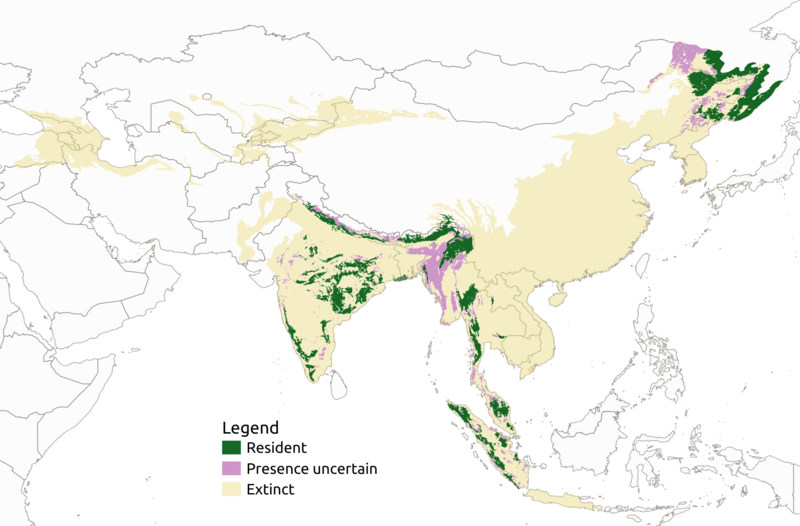Bringing back tigers in India
Tigers once roamed widely across Asia. However, by the early 2000s, they were only present in 10% of their historic range. On January 30, 2025, scientists said tiger numbers in India have increased two-fold since 2010. This is despite India being the world’s most populous country with just 18% of global tiger habitat. Researchers said there are now over 3,600 tigers in India; that’s 75% of the world’s tiger population.
The researchers published their findings in the peer-reviewed journal Science on January 30, 2025.
A conservation success story
There has been a precipitous decline in tiger populations worldwide due to habitat loss, reduced prey, conflict with humans and poaching.
For decades, India has been working to rebuild their tiger population through a multifaceted approach. They established and increased tiger reserves, created habitat corridors to help them disperse, introduced community programs for coexisting with tigers and implemented strict anti-poaching measures.
The authors wrote in their paper:
The human attitude toward biodiversity, particularly large carnivores such as the tiger, is based on cultural acceptance as well as economic benefits. The latter requires meticulous governance, and the former requires conscious nurturing. The success of tiger recovery in India offers important lessons for tiger-range countries as well as other regions for conserving large carnivores while benefiting biodiversity and communities simultaneously. It rekindles hope for a biodiverse Anthropocene.

What scientists learned from monitoring studies
Since 2006, Indian scientists have been monitoring the distribution and numbers of their tiger population every four years. They’ve also been evaluating habitat quality and prey. Between 2006 and 2018, they found the habitat occupied by tigers increased by 30%. Tiger numbers were higher near reserves that had high prey abundance, few humans and good habitat.
In contrast, tigers disappeared from locations that were far from protected areas, had increasing urbanization and development and had high human presence and armed conflicts.
Today, tigers occupy about 53,360 square miles (138,200 sq km) of habitat in 20 states in India. Some of this land is in tiger preserves specifically managed for these apex predators.
However, a lot of tiger territory is shared with about 60 million people in India. There, communities have learned to live alongside these creatures and take advantage of financial incentives such as tiger tourism and compensation for losses such as livestock attacks. Areas where tigers and humans coexist tend to be prosperous and peaceful. On the other hand, tigers are largely absent in poorer areas with conflicts, extensive land use changes and poaching.
Tigers in India coexisting with humans
The researchers found that in some cases, the presence of humans at moderate levels was not a deterrent to tiger colonization and recovery. In their paper, they said:
The areas that were newly colonized by tigers had an average density of 250 (±8) humans per square kilometer. Tigers occurred and colonized habitats interspersed with agricultural and human settlements. Habitats outside of tiger reserve cores and national parks are used by communities for their livelihoods. This land sharing with tigers varied across India, likely because of different sociocultural tolerances by people. Community tolerance to large carnivores in their backyards is mostly driven by economics, social settings, and cultural factors, in which India is richly diverse.
Tigers shared space with people at high densities in some areas (such as Madhya Pradesh, Maharashtra, Uttarakhand and Karnataka). Whereas they became extinct or were absent from areas with a legacy of extensive bushmeat consumption or commercial poaching, even when human density was relatively low (such as in Odisha, Chhattisgarh, Jharkhand, Northeastern states of India and most of Southeast Asia). Thus, it is not simply the density of humans but rather their attitudes and lifestyles that determine stewardship for tiger recovery.

Bottom line: Due to successful conservation efforts, tigers in India have increased two-fold since 2010. India now has 75% of the world’s tiger population.
Source: Tiger recovery amid people and poverty
Read more: Tigers are the biggest cats: Lifeform of the week
Read our previous article: The moon will be unusually high in the sky Feb. 7. Here’s why
